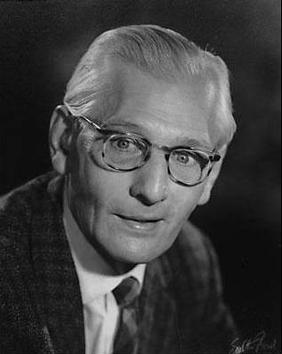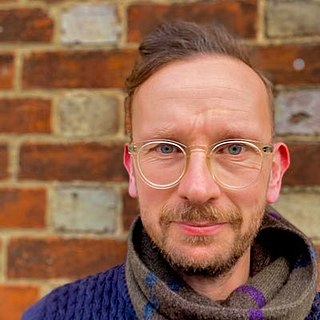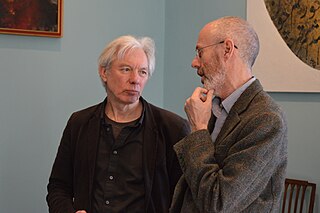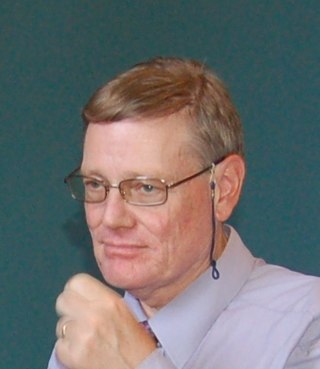Related Research Articles

Carenza Rachel Lewis is a British academic archaeologist and television presenter.

Charles Francis Christopher Hawkes, FBA, FSA was an English archaeologist specialising in European prehistory. He was Professor of European Archaeology at the University of Oxford from 1946 to 1972.

Sir Cyril Fred Fox was an English archaeologist and museum director.
Michael Parker Pearson, is an English archaeologist specialising in the study of the Neolithic British Isles, Madagascar and the archaeology of death and burial. A professor at the UCL Institute of Archaeology, he previously worked for 25 years as a professor at the University of Sheffield in England, and was the director of the Stonehenge Riverside Project. A prolific author, he has also written a variety of books on the subject.

John Desmond Clark was a British archaeologist noted particularly for his work on prehistoric Africa.

Dan Hicks, is a British archaeologist and anthropologist. He is Professor of Contemporary Archaeology at the University of Oxford, Curator at the Pitt Rivers Museum, and a Fellow of St Cross College, Oxford. His research is focused on contemporary archaeology, material culture studies, historical archaeology, colonial history, heritage studies, and the history of art, archaeology, anthropology, and museum collections.
Julian Stewart Thomas is a British archaeologist, publishing on the Neolithic and Bronze Age prehistory of Britain and north-west Europe. Thomas has been vice president of the Royal Anthropological Institute since 2007. He has been Professor of Archaeology at the University of Manchester since 2000, and is former secretary of the World Archaeological Congress. Thomas is perhaps best known as the author of the academic publication Understanding the Neolithic in particular, and for his work with the Stonehenge Riverside Project.
Timothy Darvill was an English archaeologist and author, best known for his publications on prehistoric Britain and his excavations in England, Wales, and the Isle of Man. He was Professor of Archaeology in the Faculty of Science and Technology Bournemouth University in England. In April 2008 he co-directed excavations within Stonehenge, together with Geoffrey Wainwright and Miles Russell, to examine the early stone structures on the site. The work featured heavily in a BBC Timewatch programme which examined the theory that Stonehenge was a prehistoric centre of healing. He was appointed Officer of the Order of the British Empire (OBE) in the 2010 Queen's Birthday Honours for services to archaeology.

Michael W. Pitts,, is an English freelance journalist and archaeologist who specialises in the study of British prehistory. He is the author of several books on the subject, and is the editor of British Archaeology, the publication of the Council for British Archaeology.
Mike Smith was an Australian archaeologist, scholar, historian, researcher, and author. He was instrumental in the development of Central Australian archaeological research, in particular establishing the antiquity of Aboriginal presence in the inland desert 35,000 years ago.
Paul S.C. Taçon is an anthropologist and archaeologist based in Australia. He has conducted field work in Australia, Botswana, Cambodia, Canada, China, India, Malaysia, Myanmar, Thailand, South Africa and the United States. In 2011, he was appointed the first chair in Rock Art research at Griffith University on the Gold Coast, Australia. Taçon has made several key archaeological discoveries in Australia, most notably in western Arnhem Land (NT) and Wollemi National Park (NSW). These include the earliest rock art evidence of warfare in the world, the origins of the Rainbow Serpent, significant new Arnhem Land rock art sites, rock art discoveries in Wollemi National Park and the oldest rock paintings of Southeast Asian watercraft in Australia.
Clive Stephen Gamble, is a British archaeologist and anthropologist. He has been described as the "UK’s foremost archaeologist investigating our earliest ancestors."
Peter Michael Warren, is a British archaeologist and academic, specialising in the Aegean Bronze Age. From 1977 to 2001, he was Professor of Ancient History and Classical Archaeology at the University of Bristol, where he is currently Professor Emeritus and a senior research fellow at the university.
Joan Louise Oates, FBA was an American-British archaeologist and academic, specialising in the Ancient Near East. From 1971 to 1995 she was a Fellow and tutor of Girton College, Cambridge, and a lecturer at the University of Cambridge. From 1995 she was a Senior Research Fellow of the McDonald Institute for Archaeological Research. From 2004 she was director of the excavations of Tell Brak, having been co-director, with her husband, David Oates, between 1988 and 2004.
Paul Barry Pettitt, FSA is a British archaeologist and academic. He specialises in the Palaeolithic era, with particular focus on claims of art and burial practices of the Neanderthals and Pleistocene Homo sapiens, and methods of determining the age of artefacts from this time. Since 2013, he has been Professor of Archaeology at Durham University. He previously taught at Keble College, Oxford and the University of Sheffield.
Philippa Jane Glanville , OBE, FSA, formerly chief curator of the metal, silver and jewellery department of the Victoria and Albert Museum, is an English art historian who is an authority on silver and the history of dining.

Roger Farrant Bland, is a British curator and numismatist. At the British Museum, he served as Keeper of the Department of Portable Antiquities and Treasure from 2005 to 2013, Keeper of the Department of Prehistory and Europe from 2012 to 2013, and Keeper of the Department of Britain, Europe and Prehistory from 2013 to 2015. Since 2015, he has been a visiting professor at the University of Leicester and a Senior Fellow of the McDonald Institute for Archaeological Research, University of Cambridge.
Alice Stevenson is a British archaeologist and museum curator. She is Professor of Museum Archaeology at UCL's Institute of Archaeology and a specialist in Predynastic and Early Dynastic Egyptian archaeology.
Jane Clare Grenville, is a British archaeologist and academic, specialising in the archaeology of medieval buildings. Her early career was in field archaeology, heritage, and building conservation. In 1991, she joined the University of York as a lecturer in archaeology. She served as Pro-Vice-Chancellor for Students from 2007 to 2015 and Deputy Vice-Chancellor from 2012 to 2015: she was acting Vice-Chancellor in 2013.
Stephanie Moser is an Australian archaeologist and academic. She is a professor and head of the department at the University of Southampton, England. Her work explores the exhibition and reception of the human past. Moser's research examines visual images from antiquity through the lens of modern anthropology.
References
- ↑ McKie, Robin (25 November 2001). "Stone Age man's terrors still stalk modern nightmares". The Guardian. Retrieved 6 February 2011.
- 1 2 3 4 "CHIPPINDALE, Christopher Ralph". Who's Who 2013. A & C Black. November 2012. Retrieved 17 July 2013.
- ↑ Chippindale, Christopher (1988). The Later Prehistoric rock-engravings of Val Fontanalba, Mont Bego, Tende, Alpes-Maritimes, France. E-Thesis Online Service (Ph.D). The British Library. doi:10.17863/CAM.19477 . Retrieved 5 September 2021.
- 1 2 3 "Christopher Chippindale, Esq". People of Today Online. Debrett's. Retrieved 19 July 2013.
- ↑ "People". McDonald Institute for Archaeological Research. Retrieved 19 July 2013.
- 1 2 "Chippindale, Christopher Ralph, (born 13 Oct. 1951), Reader in Archaeology, University of Cambridge, at University Museum of Archaeology and Anthropology, 2001–13, now Emeritus". Who's Who 2020 . Oxford University Press. 1 December 2019. Retrieved 5 September 2021.
- ↑ Jarman, Emma (26 February 2020). "Dr Christopher Chippindale". Department of Archaeology. University of Cambridge. Retrieved 5 September 2021.
- ↑ "C". List of Fellows. Society of Antiquaries of London. Archived from the original on 9 July 2012. Retrieved 19 July 2013.
- ↑ Thompson, M. W. (1985). "review of Stonehenge Complete by Christopher Chippindale". The Antiquaries Journal. 65: 199. doi:10.1017/S0003581500025257.
- ↑ Saunders, Peter (1990). "review of Who Owns Stonehenge? by Christopher Chippindale, Paul Devereux, Peter Fowler, Rhys Jones, and Tim Sebastian". The Antiquaries Journal. 70: 121–122. doi:10.1017/S0003581500070360. p. 122
- ↑ Bahn, Paul G. (1999). "review of The Archaeology of Rock Art, edited by Christopher Chippindale and Paul S. Taçon". Journal of Anthropological Research. 55 (3): 450–451. doi:10.1086/jar.55.3.3631397.